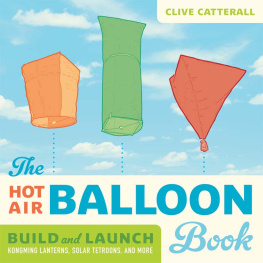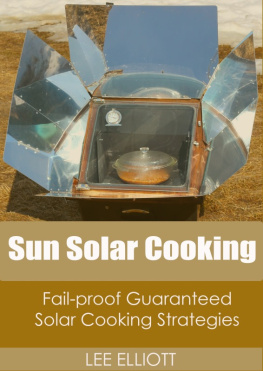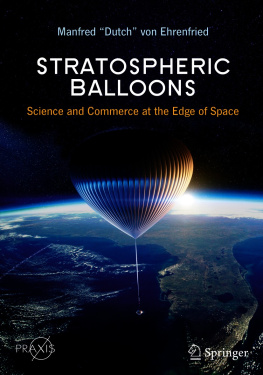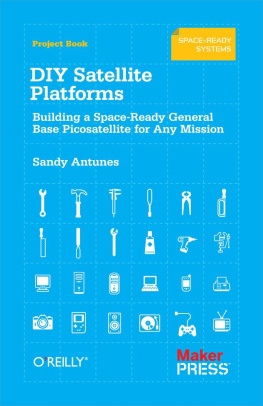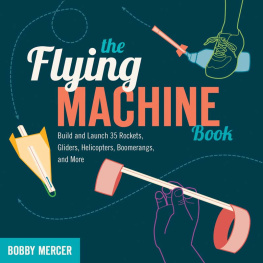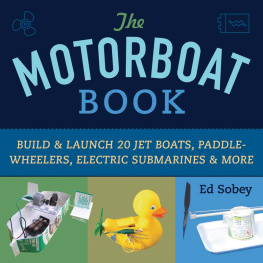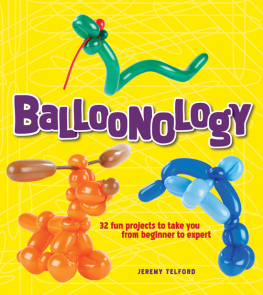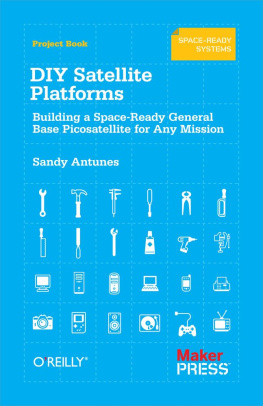Copyright 2013 by Clive Catterall
All rights reserved
First edition
Published by Chicago Review Press, Incorporated
814 North Franklin Street
Chicago, Illinois 60610
978-1-61374-096-5
Library of Congress Cataloging-in-Publication Data
Is available from the Library of Congress.
Cover design: Andrew Brozyna, AJB Design, Inc.
Interior design: Rattray Design
Printed in the United States of America
5 4 3 2 1
Contents
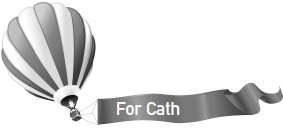

Introduction
How to Use This Book
Each project chapter in this book is split into two parts. The first part covers the design and science of the balloon. The second part contains the instructions for building.
You can build the balloons in any order you like; all of the instructions for a particular design should be contained within its own chapter. Start with an easy one, thougheither the Basic Trash Bag Balloon ().
If you run into problems building these balloons, or if you cannot find the right materials, see the troubleshooting tips in ). I have tried to gather all of the fixes and advice there.
Safety Note
All building and launching should be done under adult supervision. Many of the projects contain steps that use heat or sharp tools. If you have not used a particular tool before, ask someone to show you how to handle it safely. Wear appropriate safety equipment, especially heatproof gloves and safety glasses when handling containers of hot wax. Store your hot soldering iron in a proper stand when welding sheet plasticdont just lay it down.
before you launch your first balloon. Follow the safety advice and remember that safety is your responsibility. If you do not follow instructions and warnings, the balloons in this book can cause injuries or damage. The author and publisher accept no responsibility for damage or loss caused by anyone following the projects in this book.
1
Balloon History
Where Does the Balloon Come From?
Historians know that the first human-carrying balloon was designed and built by the Montgolfier brothers in France, and it flew for the first time in 1783. But the balloon was not a completely new idea, and it is very hard to find out who first thought of lifting things with a bag full of gas. In fact, there are a surprising number of different countries that claim to be the home of the inventor of the balloon.
China
The Chinese people love paper hot air balloons, and there are probably more paper hot air balloons flown in China than in the rest of the world combined.
The most common balloon used in festivals has a small, tapered envelope that has a square cross-section at the top that tapers to a round cross-section at the bottom. It is usually called a Kongming lantern rather than a balloon, because it has a small wax burner inside that produces a bright, luminous flame that lights up the whole envelope like a Chinese lantern. The balloon was given the name Kongming after the man who is said to have invented it.

A Kongming lantern
Zhuge Liang, also known as Kongming, was an advisor, military strategist, and chancellor for the Shu Han region during the Three Kingdoms period of Chinese history. He was famous for his wisdom, intelligence, and cunning. He was so clever that he could always invent new and surprising ways of beating his enemieseven when the situation looked impossible. One of the stories about Zhuge Liang tells how he invented the hot air balloon.
Zhuge Liang and his troops were occupying the town of Pingyang when his enemy Sima Yi surrounded it and began a siege, hoping to force the famous Zhuge Liang to surrender. Sima Yis troops had occupied the land all around the town and watched carefully for messengers leaving the town, so there was no way for Zhuge Liang to send a signal to his allies for help.
Zhuge Liang noticed that the wind was blowing toward his allies, so he asked for a special large lantern to be made with no hole in the top and a wax burner held in the bottom. He painted a message onto the side of the lantern and carried it up to a tower on the town wall. He lit the burner and released the lantern, which floated away in the wind toward his allies. Sima Yis troops below could only watch as the lantern passed overhead, carrying a message that asked for help. Sure enough, Zhuge Liangs allies saw the message, rode to Pingyang, and rescued Zhuge Liang and his troops.
Apart from this legend, there is no historical evidence that Zhuge Liang invented the hot air balloon. One writer suggested that the Kongming lantern might have been invented by a Chinese lantern-maker and then named after the famously clever Zhuge Liang, perhaps because it looks a lot like the little square hat Zhuge Liang always used to wear. Sadly, even this explanation is unlikely as there are no written descriptions of paper hot air balloons in China before 1783.
Italy
Francesco Lana was born in 1631 in Brescia, Lombardy, an area in the north of modern Italy. He became a Jesuit priest and, like many Jesuits, was encouraged to study so that he could become a teacher. Eventually he became a professor of mathematics and physics at Brescia, and while he was teaching there he learned about Otto Von Guerickes experiments at Regensburg and Magdeburg in 1654.
Von Guericke had shown that two copper hemispheres 20 inches (50 cm) in diameter could be held together by pumping out the air from the space between them. The atmospheric pressure outside the hemispheres was so great that once all the air had been pumped out, two teams of eight horses could not pull them apart.
Lana was fascinated by the experiment, but he was particularly interested in the new and more efficient vacuum pump Von Guericke had invented. Lana calculated the weight that must have been lost from the pair of copper hemispheres when the air was pumped out. If a sphere could be made from thin enough material, then the weight of the air removed from inside the sphere by this new pump might actually be greater than the weight of the sphere itself. This should make the sphere float in the air!

Lanas airboat
In 1663 Lana designed a lighter-than-air ship, the details of which he later published in 1670 in his book Prodomo. This design used four large floating copper spheres from which a boat is suspended. The boat had a sail and hull, as Lana intended it to be propelled by the wind and steered much as a boat on the sea.
Lana never tried to build his airboat, and of course there would have been practical problems if he had. To make the airboat fly, I estimate that the copper skin of the big spheres would have to be less than 0.004 inches (0.1 mm) thick. This is about the thickness of a human hair and only about four times the thickness of household aluminum foil. At this thickness, the sphere would collapse under its own weight even before you tried to pump out any air.
Portugal and Brazil
Next page
